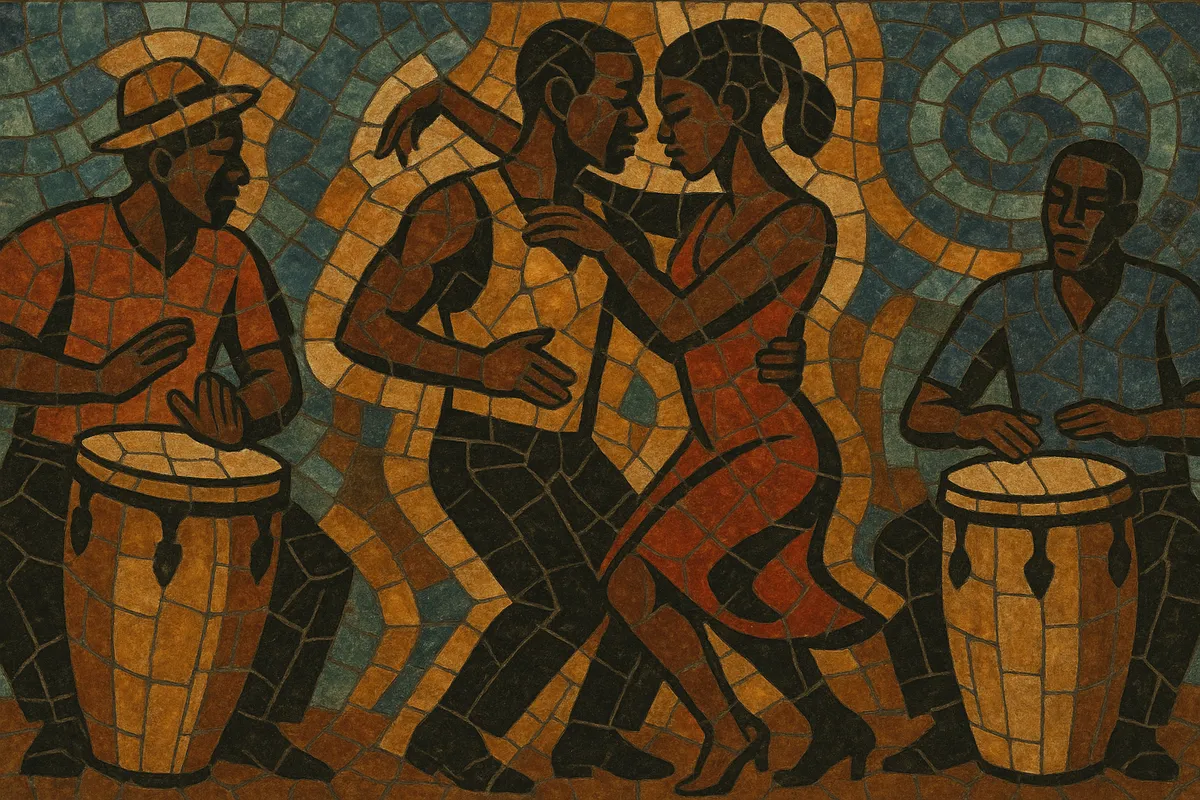Guaguancó is a vibrant couple-dance style within the Cuban rumba family that emerged in working‑class Afro‑Cuban neighborhoods, especially in Havana and Matanzas. It features an interlocking percussion ensemble, call‑and‑response vocals, and a flirtatious dance whose central dramatic gesture is the vacunao, a playful, sudden pelvic or hand "tag" that the partner attempts to block.
Musically, guaguancó is organized around the rumba clave (in 3‑2 or 2‑3 orientation), with layered patterns on congas (tumbadoras), the lead quinto drum improvising over the groove, and timekeeping on claves and a wooden guagua/cata. The singing typically begins with an improvised diana (vocal fanfare), moves into solo verses (pregón) and a catchy coro (estribillo). The overall effect is communal, earthy, and intensely rhythmic—designed as much for dance and social play as for musical display.
Guaguancó took shape in the 1880s–1890s in port and urban districts of Havana and Matanzas, shortly before and after the abolition of slavery in Cuba. It crystallized from Afro‑Cuban community practices—street gatherings, yard parties (solares), work‑song call‑and‑response, and diverse Central and West African rhythmic traditions—into a distinct rumba style centered on flirtatious couple interaction and a medium‑fast, propulsive drum groove.
By the early 1900s, guaguancó coexisted with the other core rumba styles (yambú and columbia), gaining a profile as the quintessential urban rumba. Performances relied on homemade drums, claves, and wooden slit drums (guagua/cata), with singers improvising topical verses and refrains. Though largely a neighborhood practice, it attracted the attention of folklorists and musicians who helped carry the style onto stages and into studios.
In the 1950s–1960s, rumba—guaguancó in particular—was documented on records and formalized by professional troupes such as the Conjunto Folklórico Nacional de Cuba. Groups like Los Muñequitos de Matanzas (originally Guaguancó Matancero) became emblematic, refining ensemble roles, codifying dance vocabulary, and spreading the style nationally and internationally.
From the 1970s onward, master rumberos and ensembles (Los Papines, Yoruba Andabo, AfroCuba de Matanzas) toured abroad, and guaguancó rhythms informed salsa bands, Latin jazz arrangers, and later Cuban genres like songo and timba. In 2016, Cuban rumba (including guaguancó) was inscribed by UNESCO as Intangible Cultural Heritage, affirming its ongoing vitality in community patios, comparsa‑inspired street events, and professional stages worldwide.


